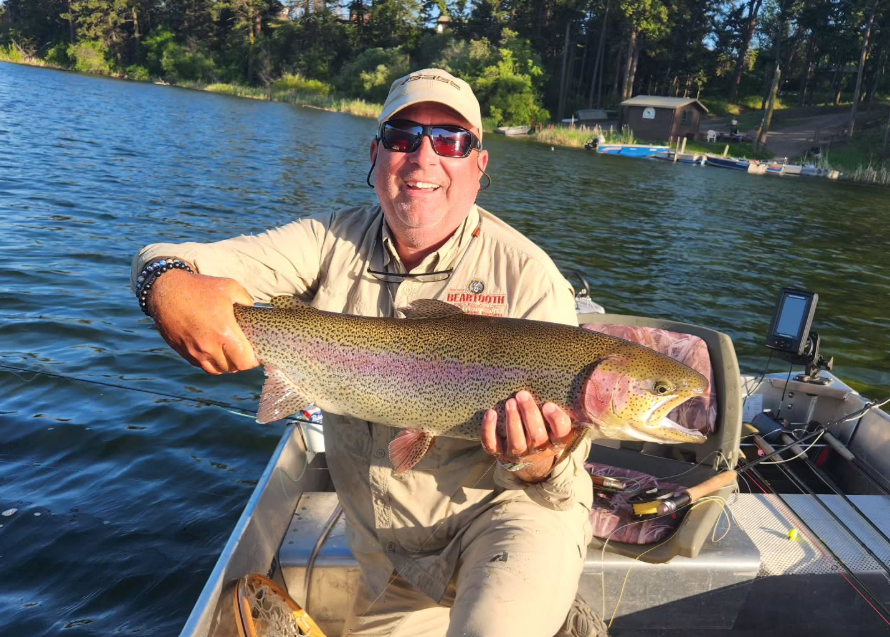
Preserving Montana's Trout: A Call to Action
Share
By Clive Massey
Montana's rivers and streams are renowned for their pristine beauty and abundant trout populations, attracting anglers from around the globe. However, these treasured fisheries face numerous challenges that threaten their sustainability. As a seasoned fly fisherman with over 55 years of experience across the Globe, I have witnessed firsthand the delicate balance required to maintain healthy trout ecosystems. This article delves into the critical aspects of trout conservation in Montana, emphasizing the importance of habitat preservation, responsible angling practices, and community involvement.
The Significance of Montana's Trout Fisheries
Montana's trout fisheries are not only a cornerstone of the state's natural heritage but also a vital component of its economy. Species such as the native West slope Cutthroat and Bull Trout, along with introduced populations of Rainbow and Brown Trout, offer diverse angling opportunities. These fisheries support local economies through tourism and recreation, underscoring the need for their preservation.
Challenges Facing Trout Populations
Trout populations in Montana confront several threats, including habitat degradation, climate change, and overfishing. Agricultural runoff, deforestation, and urban development contribute to the deterioration of water quality and spawning grounds. Rising temperatures and altered precipitation patterns exacerbate these issues, leading to reduced stream flows and increased water temperatures, which are detrimental to trout survival.
Habitat Restoration Efforts
Effective conservation hinges on habitat restoration. Initiatives such as riparian zone rehabilitation, removal of migration barriers, and streambank stabilization have shown promise in revitalizing trout habitats. Collaborative projects between government agencies, non-profits, and local communities have led to the successful restoration of critical spawning areas, enhancing both trout populations and overall ecosystem health.
The Role of Anglers in Conservation
Anglers play a pivotal role in trout conservation. Adopting catch-and-release practices, using barbless hooks, and adhering to seasonal regulations help minimize stress and mortality in fish populations. Additionally, participating in citizen science programs and habitat restoration projects allows anglers to contribute directly to conservation efforts.
Community Engagement and Education
Building a conservation-minded community is essential for the long-term preservation of trout fisheries. Educational programs that raise awareness about the ecological and economic importance of trout, as well as the challenges they face, can foster a culture of stewardship. Schools, local organizations, and media outlets serve as platforms to disseminate this crucial information.
Policy and Regulation
Robust policies and regulations are fundamental to effective conservation. Enforcing water quality standards, regulating land use, and implementing sustainable fishing practices are necessary measures. Policymakers must collaborate with scientists, conservationists, and the public to develop and enforce regulations that balance ecological health with economic interests.
The Future of Trout Conservation in Montana
The path forward requires a multifaceted approach that integrates scientific research, community involvement, and adaptive management strategies. Monitoring trout populations and habitat conditions enables the assessment of conservation efforts and informs necessary adjustments. Embracing innovative solutions, such as climate-resilient habitat designs and advanced monitoring technologies, will be crucial in addressing emerging challenges.
The conservation of Montana's trout fisheries is a shared responsibility that demands concerted efforts from individuals, communities, and policymakers. By prioritizing habitat restoration, practicing responsible angling, and fostering a culture of conservation, we can ensure that these iconic species continue to thrive for future generations to enjoy.
About the Author
Clive Massey
Grew up in Vancouver, British Culumbia, Canada, and has been an avid fly fisherman for over 55 years. His angling adventures have taken him to almost every corner of he globe including travels to Montana, Alberta, Washington, British Columbia, Idaho, Yukon, Florida, Argentina as well as East Africa. A former fishing guide in Yukon and Alberta, Clive is also a skilled casting instructor and fly tyer, crafting his own patterns for specific waters. His extensive experience and passion for the sport have made him a respected voice in the fly-fishing community.
